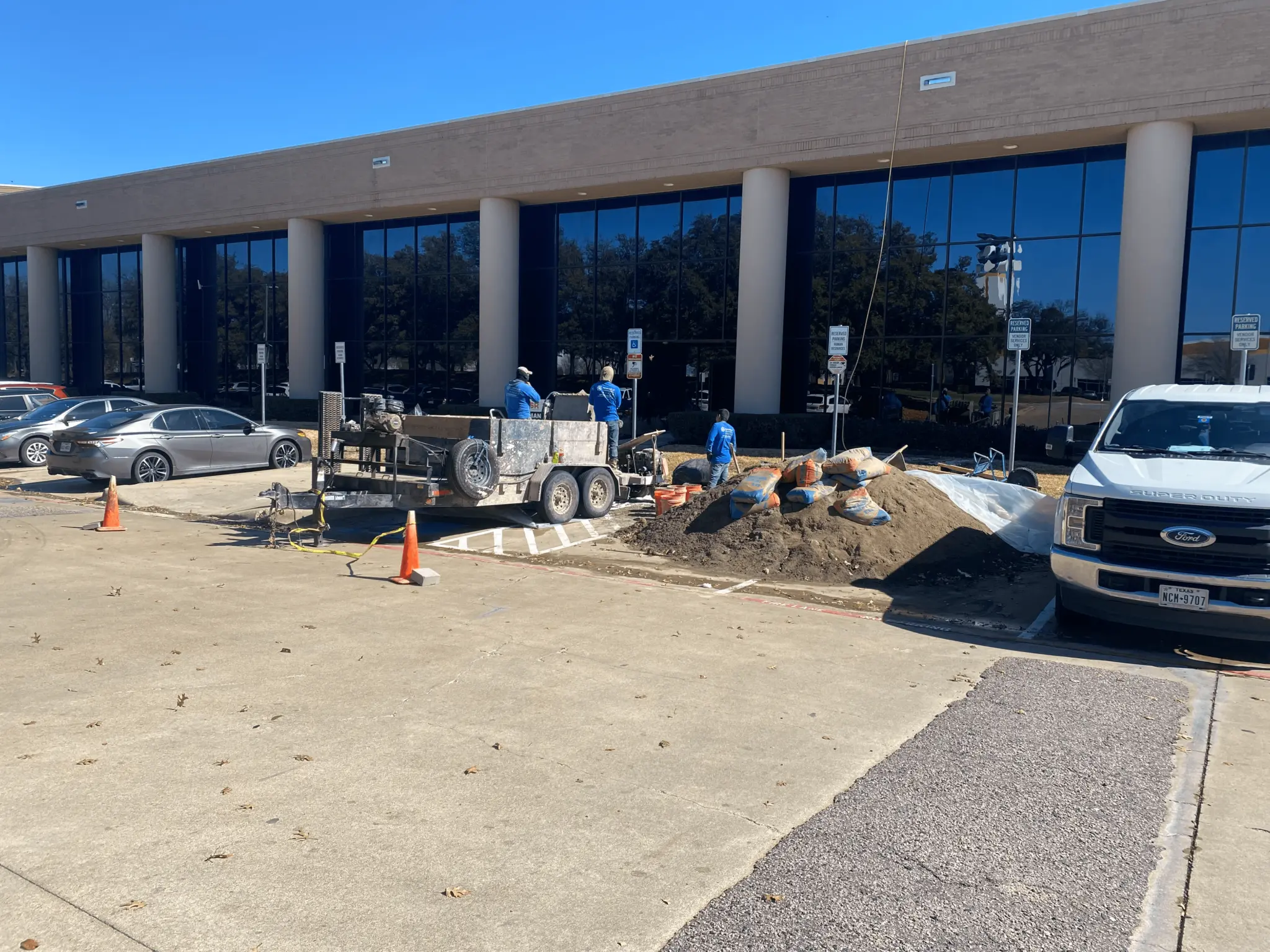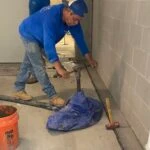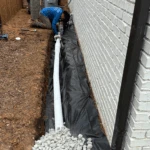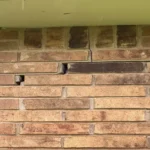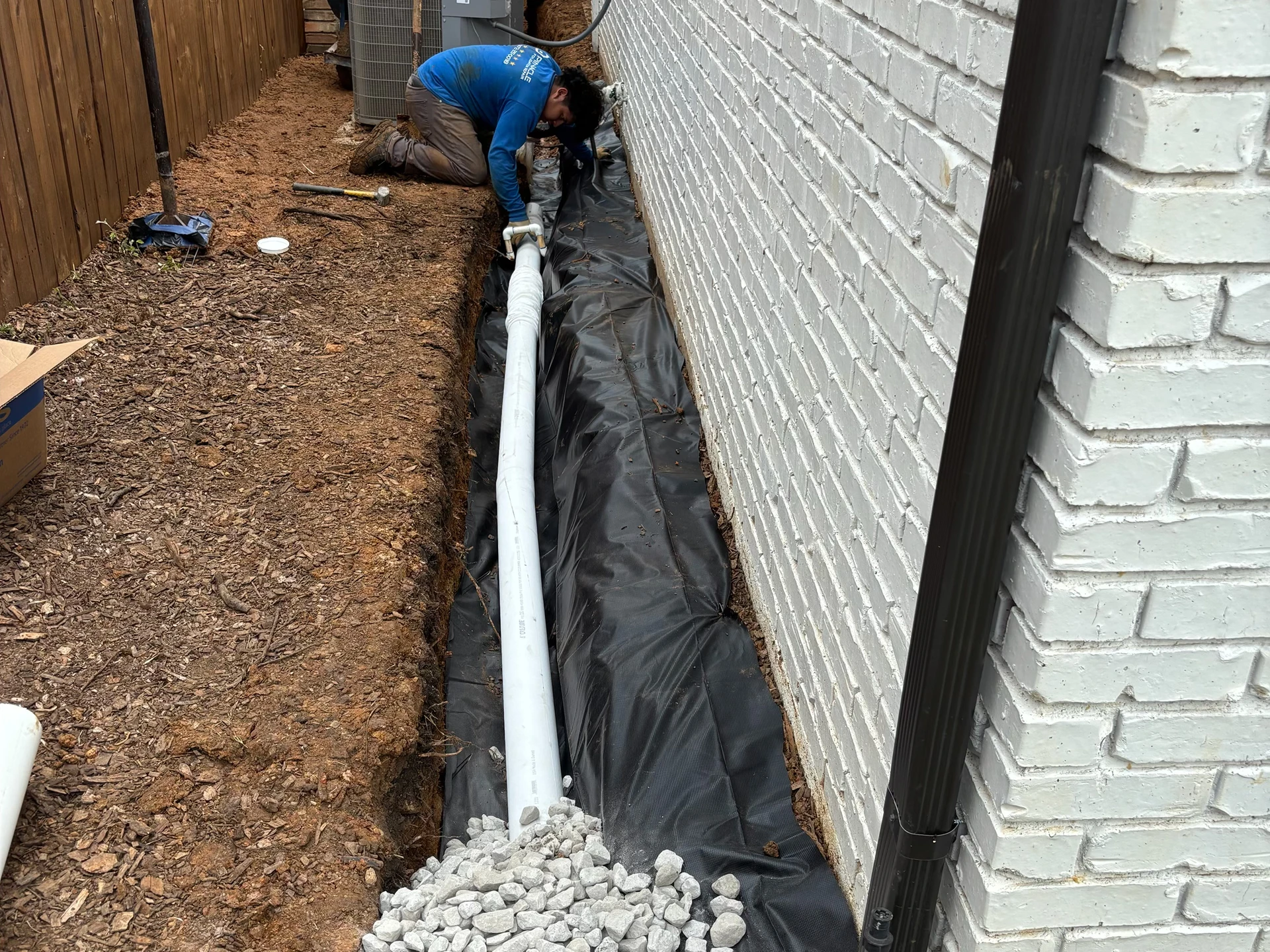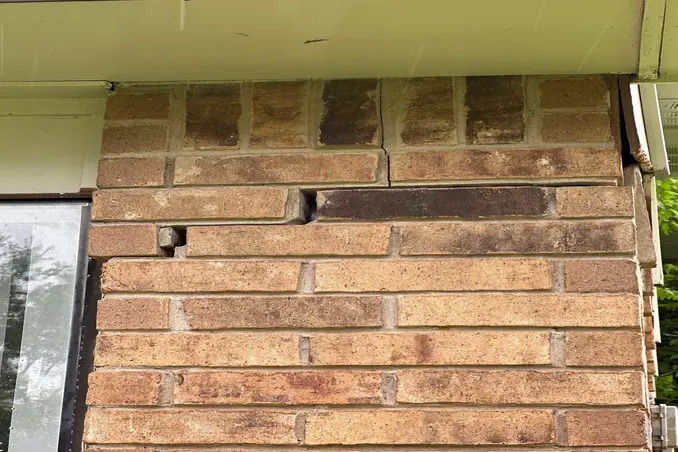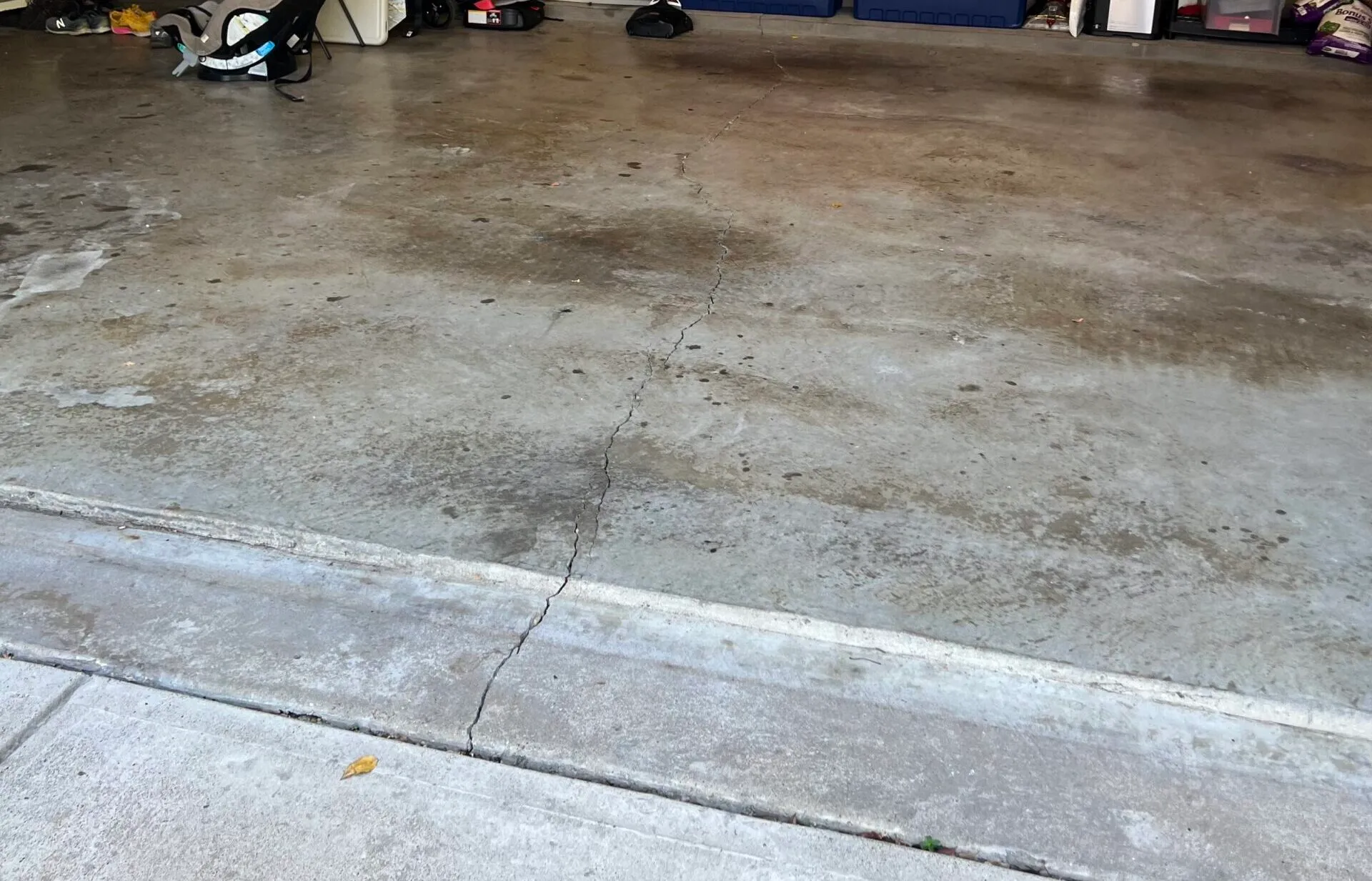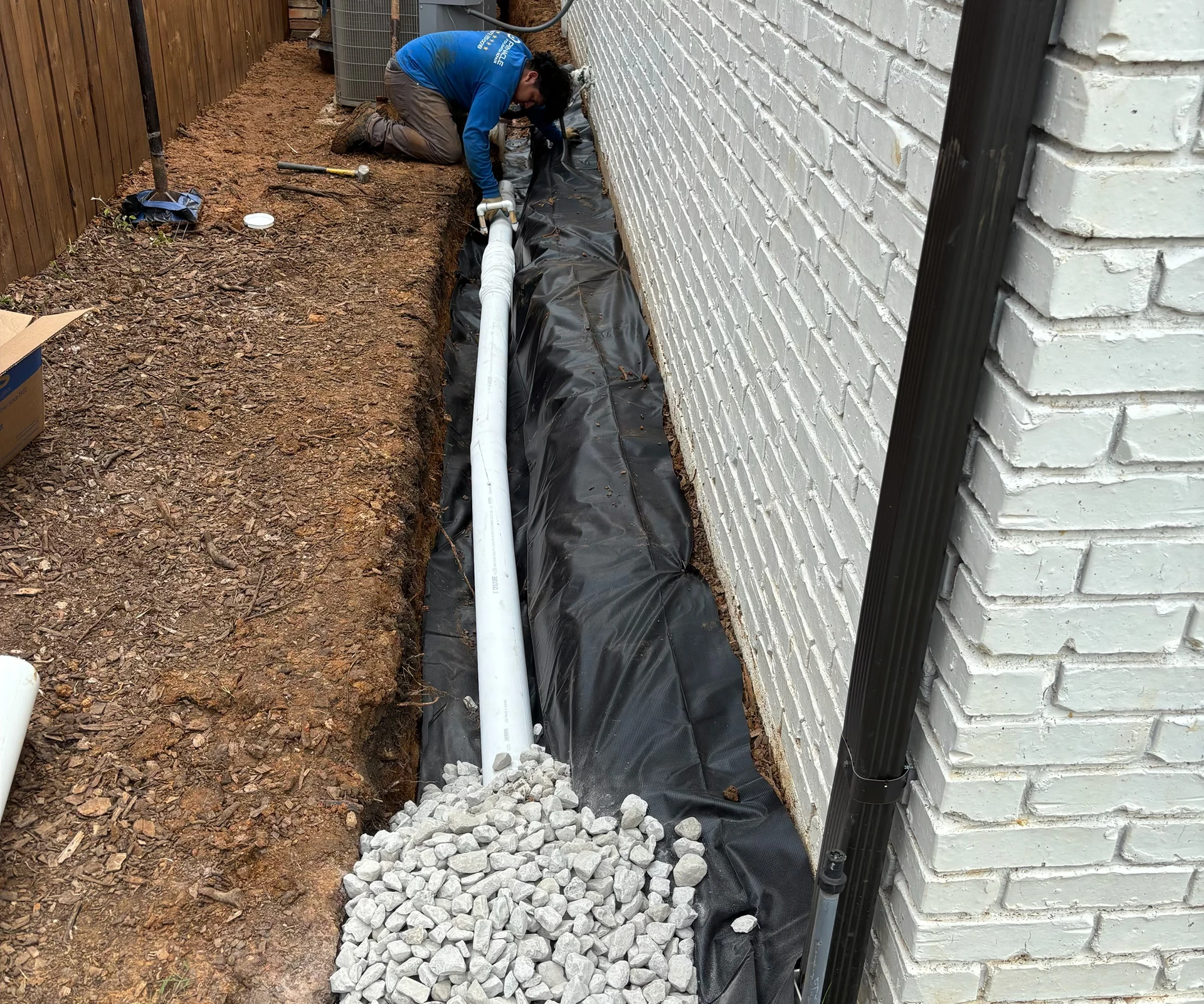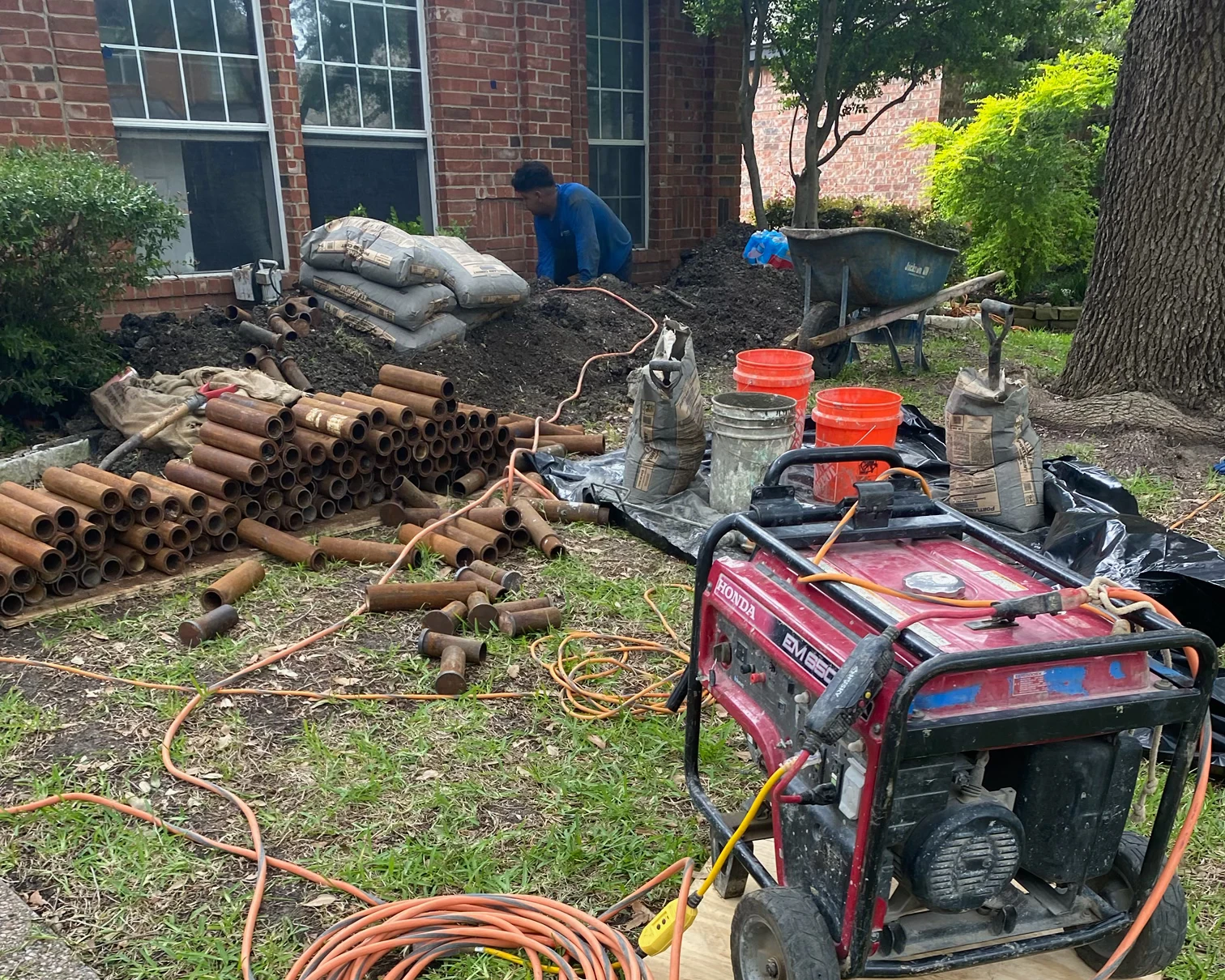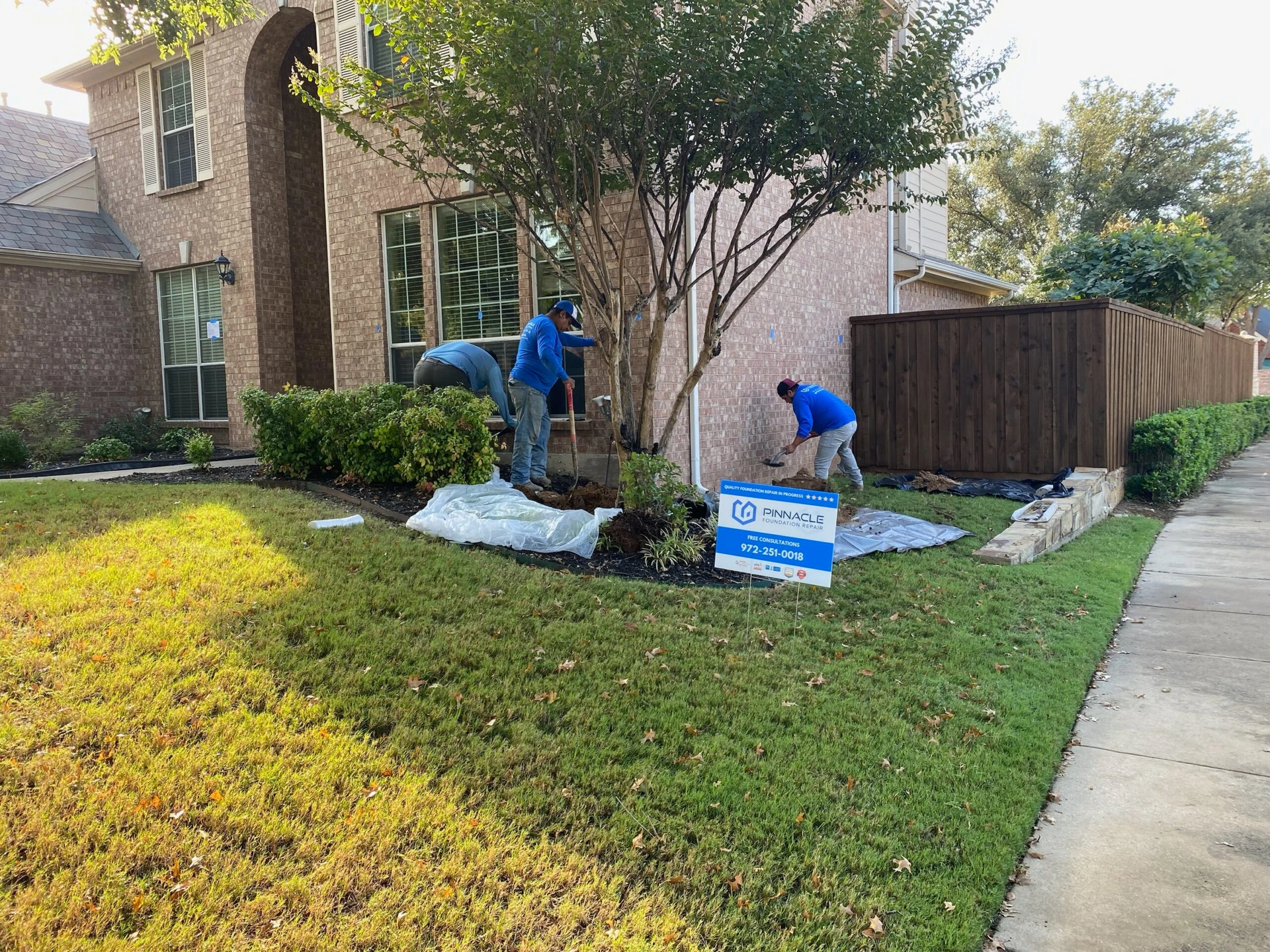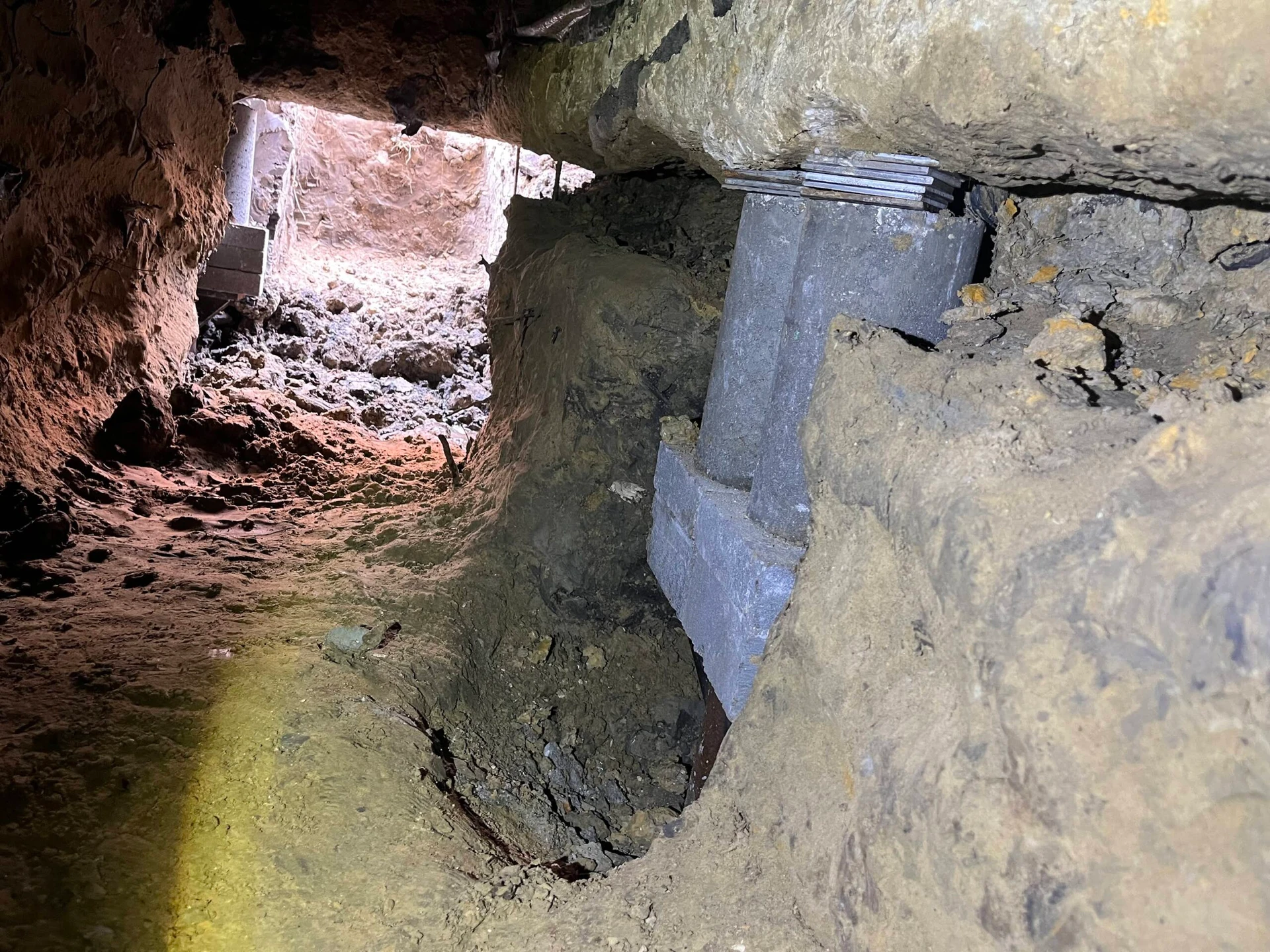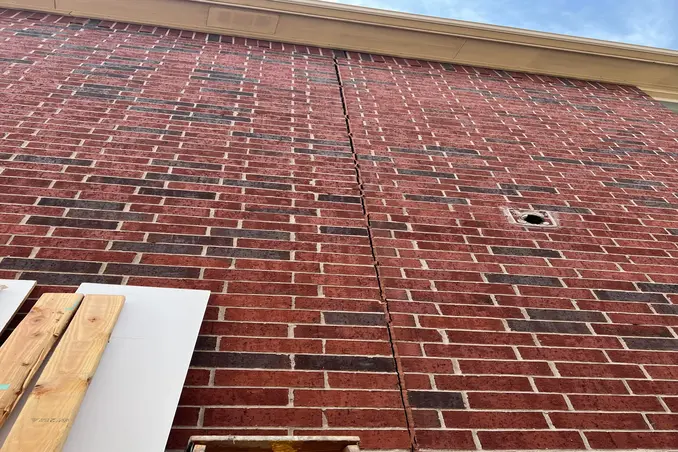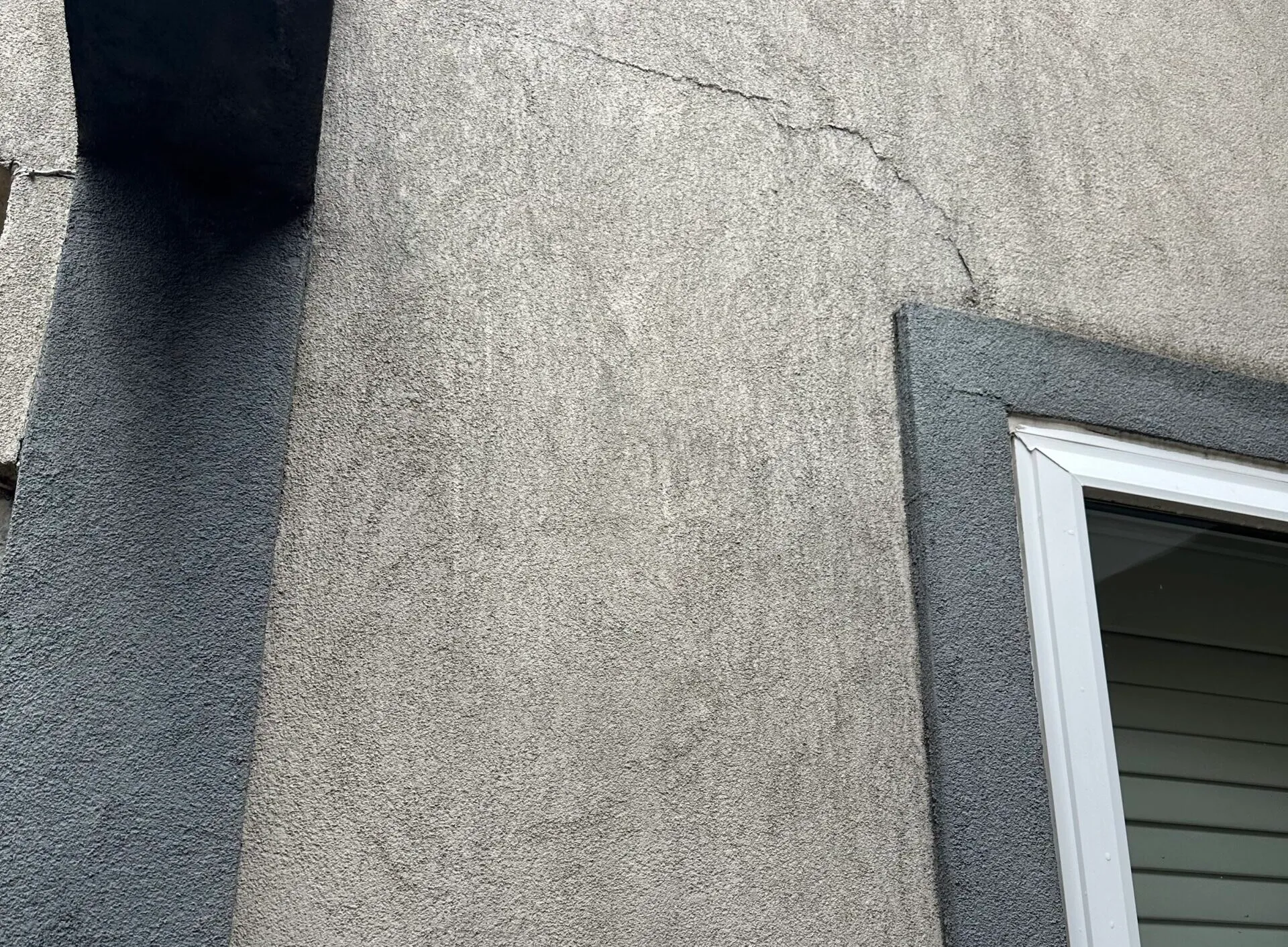Cracks in walls. Doors and windows that don’t close properly. Floors that feel uneven when you walk across them.
In North Texas, these issues are common. And more often than not, they point to the same source: clay soil shifting beneath your foundation.
Clay soil swells when it’s wet and shrinks when it’s dry. That constant movement puts enormous pressure on your foundation, leading to cracks, tilting, and settlement over time. The solution to this issue isn’t guesswork — it’s careful planning. With the right stabilization methods, you can restore support and protect your property for the long term.
Why Clay Soil Causes Foundation Problems
North Texas is famous (or infamous) for its clay-rich soils. These soils are highly expansive, meaning they swell dramatically when wet and shrink when dry. That movement puts enormous pressure on anything built above them.
Here’s why that matters:
Clay Expands and Contracts with Moisture
Expansive clays, such as montmorillonite, can dramatically increase in volume when they absorb moisture. Lab studies show they can swell up to 15 times their dry volume. When they dry out, they shrink.
That repeated expansion and shrinkage causes:
- Foundation settlement (sinking or tilting)
- Slab cracks
- Pier movement
- Heaving (upward buckling)
Uneven Moisture = Uneven Support
The problem isn’t just that clay moves; it’s that it moves unevenly. If one part of your foundation sits on dry clay while another sits on wet clay, your structure ends up riding a roller coaster. That differential movement leads to cracks, warping, and long-term instability.
Signs Your Foundation Is Struggling
Not every crack is cause for panic, but in clay soil regions, it’s smart to stay vigilant. Here are common red flags that your foundation may be compromised:
- Diagonal cracks in walls (especially above windows or doors)
- Gaps between bricks or siding
- Sloping or uneven floors
- Doors or windows that stick or won’t latch
- Separation between exterior walls and patios/porches
- Cracks in the foundation slab itself
If you see more than one of these — or if they’re growing — it’s time for a professional evaluation.
How to Stabilize a Foundation on Clay Soil
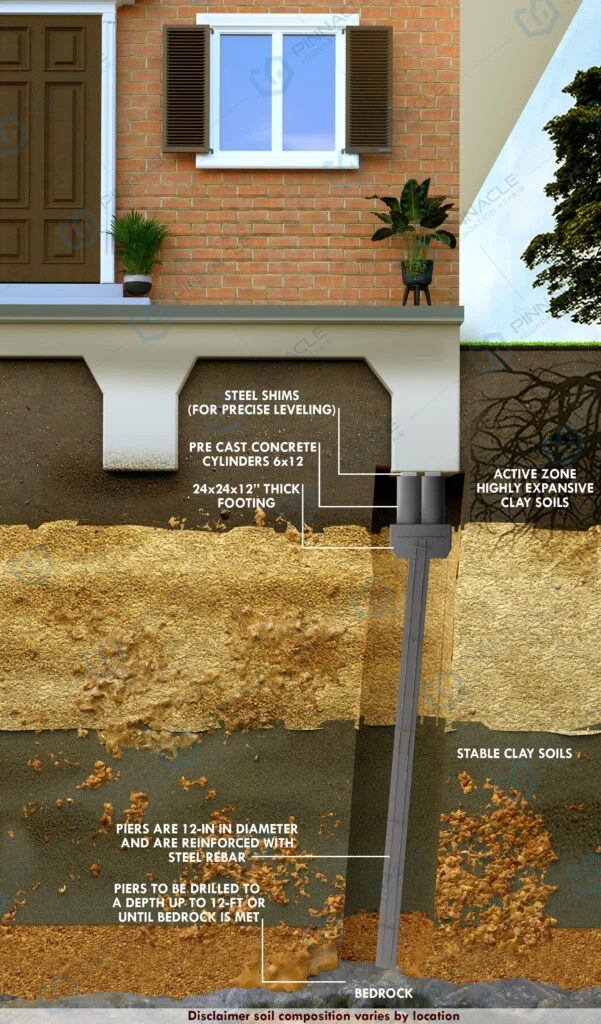
The right repair method depends on your structure, the soil beneath it, and the extent of movement. Here are the most effective ways to stabilize foundations in clay-rich areas.
Steel Piers
Steel piers are the gold standard for long-term stability. We drive 12-inch interlocking steel pipes deep into the ground — often up to 75 feet — until they reach bedrock or very dense strata. Once they’re in place, we fill the pipes with cement to prevent internal failure.
Why it works on clay:
Because steel piers bypass the unstable upper layers of clay, they anchor your foundation to stable material far below the active zone. That means seasonal moisture swings won’t affect your support system.
Steel Transition Piers
Steel transition piers combine double-walled steel shafts with a high-strength concrete core. They reach deeper than traditional concrete pressed pilings but cost less than full steel systems.
Why it works on clay:
Transition piers provide deep anchoring similar to steel piers while using concrete’s compressive strength to stabilize the load. This makes them ideal for homes or businesses that need serious stability without maxing out the budget.
Helical Piers
Helical piers use steel shafts with round helix plates (like giant screws) that twist into the soil. They’re ideal when vibration needs to be minimized, such as when lifting fragile structures or working near utilities.
Why it works on clay:
Helicals can penetrate deep enough to bypass active clay zones. However, they’re not always suitable for dense or highly expansive clay, which is why our team evaluates soil conditions carefully before recommending them.
Drilled Piers
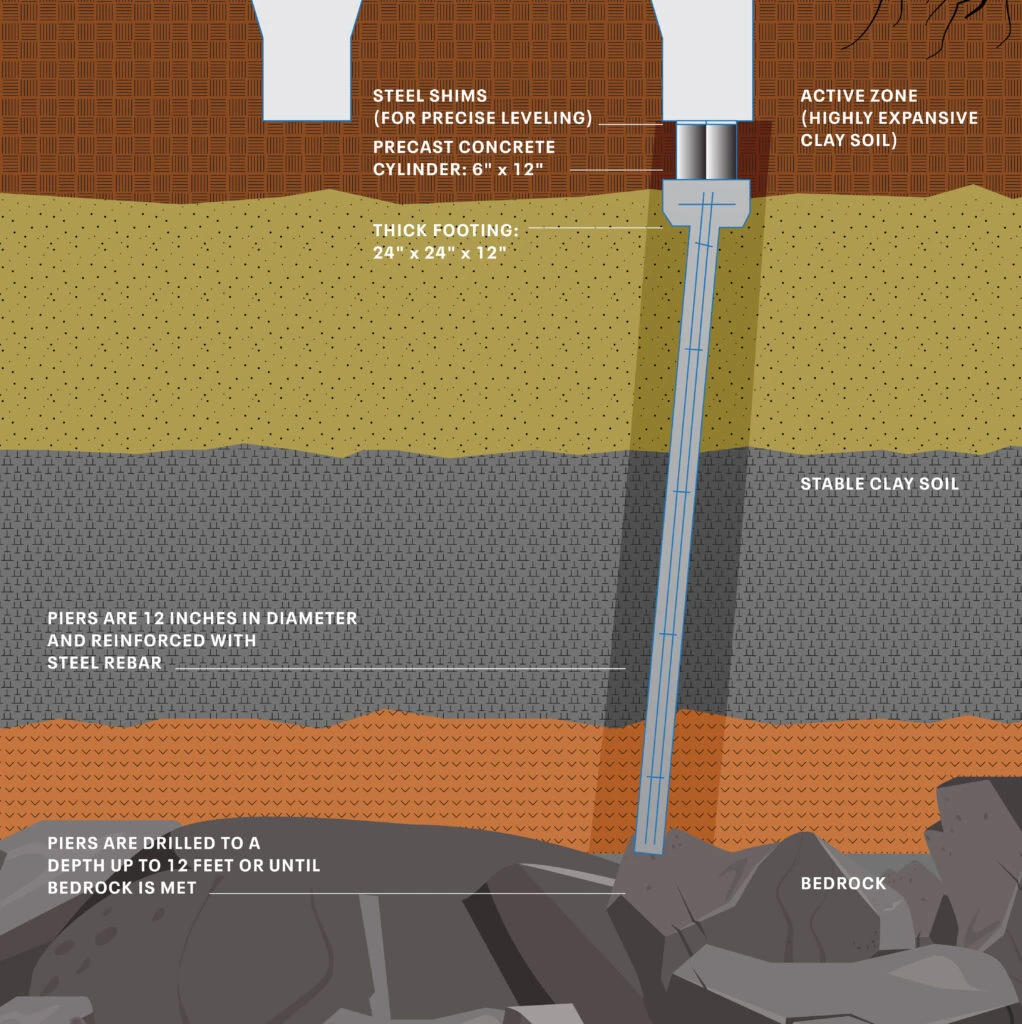
Drilled piers are 12–18 inches wide, reinforced with rebar, and poured with a high-strength concrete mix. They typically extend about 12 feet deep.
Why it works on clay:
Drilled piers can stabilize smaller structures, but because they don’t go as deep as steel, they’re only ideal when the depth of movement matches or exceeds the depth of the pier. We only recommend them when site conditions are appropriate.
Preventing Foundation Problems in Clay Soil
Stabilizing a foundation is step one. Keeping it stable is step two.
Even the strongest pier system can be compromised if the surrounding soil is constantly swelling and shrinking. That’s why preventative care matters. Here’s what we recommend to homeowners and property managers in clay-rich regions:
Maintain Consistent Moisture
During hot, dry spells, the soil around your foundation can shrink and pull away. Using a soaker hose or smart irrigation system can help keep moisture levels more even. The goal isn’t to drench the soil, but to prevent drastic drying that causes uneven settlement.
Improve Drainage
Make sure water flows away from your foundation. You can do this in a few ways:
- Extend downspouts at least 4 to 6 feet from the house
- Regrade landscaping to slope away from the slab
- Consider French drains in problem areas
Seal Cracks Promptly
Even hairline cracks can let moisture in, which, unfortunately, accelerates erosion and expansion. Have them professionally sealed when you find them, even if they’re tiny. Sealing small cracks early prevents larger problems later.
Schedule Regular Inspections
Have a foundation professional evaluate your property every 1 to 2 years, especially if you’ve had prior repairs or live in a high-movement area. Experienced eyes can spot subtle changes you might miss, saving you from unexpected costs down the line.
Residential vs. Commercial Applications
Foundation stabilization isn’t just for homes. Clay affects every structure. Stabilization can benefit both residential and commercial applications suffering from sinking or cracking.
| Residential Applications | Commercial Applications |
| Slab-on-grade homes | Retail buildings |
| Pier & beam houses | Office complexes |
| Patios, porches, and driveways | Parking lots and accessibility ramps |
| Garage floors | Warehouse and industrial slabs |
| Pool decks and walkways | Loading docks and service bays |
At Pinnacle Foundation Repair, we have decades of experience stabilizing both types of properties. We tailor every solution to the unique demands of each structure.
How Pinnacle Foundation Repair Can Help
We’re a third-generation foundation repair team rooted in North Texas with over 20 years of experience from our founder and CEO. Pinnacle holds a five-star average across platforms, including Google and Best Pick Reports, backed by hundreds of satisfied customers. We’re known not just for repairs, but also for honest, transparent evaluations, whether you’re a homeowner, builder, or business owner.
When you schedule a free evaluation, here’s what you can expect:
- A full visual inspection of your structure
- A soil assessment (when needed)
- A clear, written explanation of any problems found
- Transparent recommendations with no upsell
- A repair plan tailored to your soil, structure, and budget
We don’t believe in one-size-fits-all fixes, especially not when clay is involved.
Get Your Foundation Back on Solid Ground
Clay soil won’t stop moving, but your foundation doesn’t have to move with it. With the right pier system, you can restore stability, protect your property, and prevent costly damage in the years ahead.
At Pinnacle Foundation Repair, we combine three generations of expertise with honest evaluations and lasting solutions. Whether you’re managing a business, maintaining a home, or just starting to see the warning signs, we’re here to help.
Don’t wait for small cracks to turn into major repairs. Book your free foundation evaluation today, and let’s get your structure back on solid ground.

